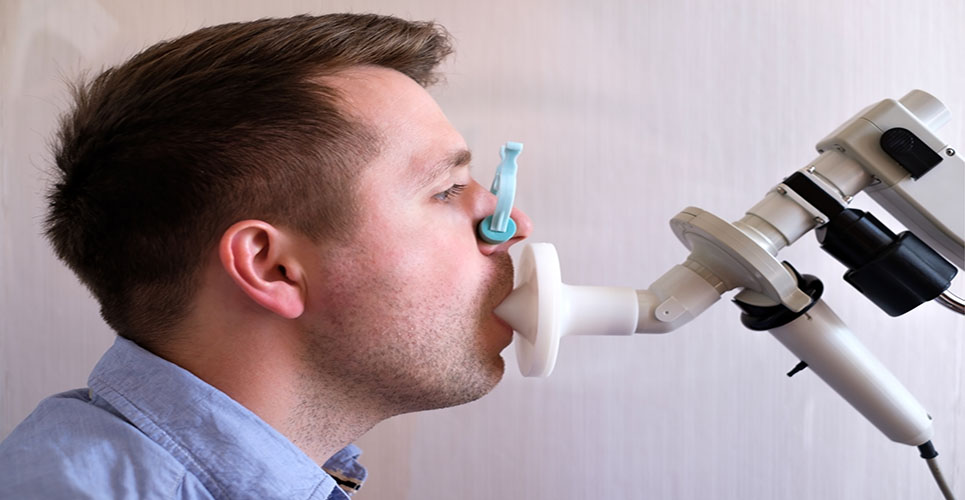Novartis presented new data that demonstrated once-daily Ultibro® Breezhaler® (indacaterol/glycopyrronium bromide) was superior in reducing exacerbations (flare ups) and improving lung function compared to twice-daily Seretide®Accuhaler®* (salmeterol/fluticasone (SFC)), in patients with moderate-to-severe chronic obstructive pulmonary disease (COPD).
Novartis presented new data that demonstrated once-daily Ultibro® Breezhaler® (indacaterol/glycopyrronium bromide) was superior in reducing exacerbations (flare ups) and improving lung function compared to twice-daily Seretide®Accuhaler®* (salmeterol/fluticasone (SFC)), in patients with moderate-to-severe chronic obstructive pulmonary disease (COPD).
These findings from the head-to-head LANTERN study were presented for the first time at the European Respiratory Society (ERS) International Congress, September 6-10, in Munich, Germany.
The LANTERN study showed Ultibro Breezhaler significantly reduced the rate of moderate-to-severe exacerbations by 31% compared to SFC1, in moderate-to-severe COPD patients with a history of one exacerbation or none in the previous year. In addition, Ultibro Breezhaler patients had significantly increased lung function (trough FEV1 0.075 L (p<0.001); AUC0-4h 0.122 L (p<0.001)), as compared to SFC after 26 weeks of treatment. The safety profile of Ultibro Breezhaler was comparable to SFC1.
“These new results from LANTERN provide further evidence of the potential of Ultibro Breezhaler to deliver better exacerbation reduction and improvements in lung function, compared to the current standard of care,” said Vasant Narasimhan, Global Head of Development, Novartis Pharmaceuticals (1,2).
The new findings from LANTERN support the use of Ultibro Breezhaler as an alternative steroid-free treatment to SFC in moderate-to-severe COPD patients1. This approach is consistent with the Global Initiative for Chronic Obstructive Lung Disease 2014 guidelines (3).
COPD symptoms can have a major negative impact on a patient’s ability to breath and function, reducing their quality of life (3,4). Essential daily activities such as climbing stairs can become very difficult as the condition gradually worsens (5). There is a need for newer treatment options in COPD because many patients remain symptomatic despite medical therapy (6).
About LANTERN
LANTERN was a randomised, double-blind, parallel-group, 26-week study involving 744 patients and conducted at 56 sites across China, Argentina, Chile and Taiwan (7). The primary objective of the study was to demonstrate the non-inferiority of UltibroBreezhaler 110/50 mcg to SFC 50/500 mcg in terms of lung function (trough FEV1) after 26 weeks of treatment in stable patients with moderate-to-severe COPD, with a history of one exacerbation or none in the previous year (1). Ultibro Breezhaler demonstrated non-inferiority and additionally showed superior efficacy versus SFC for the primary objective. In this study, exacerbations were a pre-specified exploratory endpoint.
About Ultibro Breezhaler
Ultibro Breezhaler is a once-daily dual bronchodilator approved in the European Union (EU) as a maintenance bronchodilator treatment to relieve symptoms in adult patients with COPD (2). Clinical trials have shown that it offers statistically significant improvements in bronchodilation compared to treatments widely used as current standards of care, including SFC 50/500 mcg8-10 and open-label tiotropium (18 mcg). Ultibro Breezhaler is currently approved for use in over 40 countries, including countries within the EU, Japan, Canada, countries within Latin America and Australia.
References
- Zhong N et al. Efficacy and safety of once-daily QVA149 compared with twice-daily salmeterol/fluticasone combination (SFC) in patients with COPD: the LANTERN study. [ERS abstract 700090; Session 281; Date: September 8 2014 Time: 12:50-14:40].
- Ultibro Breezhaler EU Summary of Product Characteristics. [Online] 3 October 2013. Available at: http://www.ema.europa.eu/docs/en_GB/document_library/EPAR_-_Product_Information/human/002679/WC500151255.pdf [Accessed 8 September 2014].
- Global Initiative for Chronic Obstructive Lung Disease (GOLD). Global strategy for the diagnosis, management, and prevention of chronic obstructive pulmonary disease. Updated 2014. http://www.goldcopd.org/uploads/users/files/GOLD_Report2014_Feb07.pdf [Accessed 8 September 2014].
- Joshi M, Joshi A, Bartter T. Symptom burden in chronic obstructive pulmonary disease and cancer. Curr Opin Pulm Med 2012;18:97-103.
- World Health Organization. Chronic Obstructive Pulmonary Disease Factsheet No. 315, Available at: http://www.who.int/mediacentre/factsheets/fs315/en/. [Accessed 8 September 2014].
- Hersh CP. Pharmacogenetics of chronic obstructive pulmonary disease: challenges and opportunities. Pharmacogenomics 2010;11(2):237-247. Clinicaltrials.gov. A 26-week treatment randomized, double-blind, double dummy study to assess the efficacy and safety of QVA149 (LANTERN). NCT01709903. http://clinicaltrials.gov/ct2/show/NCT01709903 [Accessed 8 September 2014].
- Clinicaltrials.gov. A 26-week treatment randomized, double-blind, double dummy study to assess the efficacy and safety of QVA149 (LANTERN). NCT01709903. http://clinicaltrials.gov/ct2/show/NCT01709903 [Accessed 8 September 2014].

